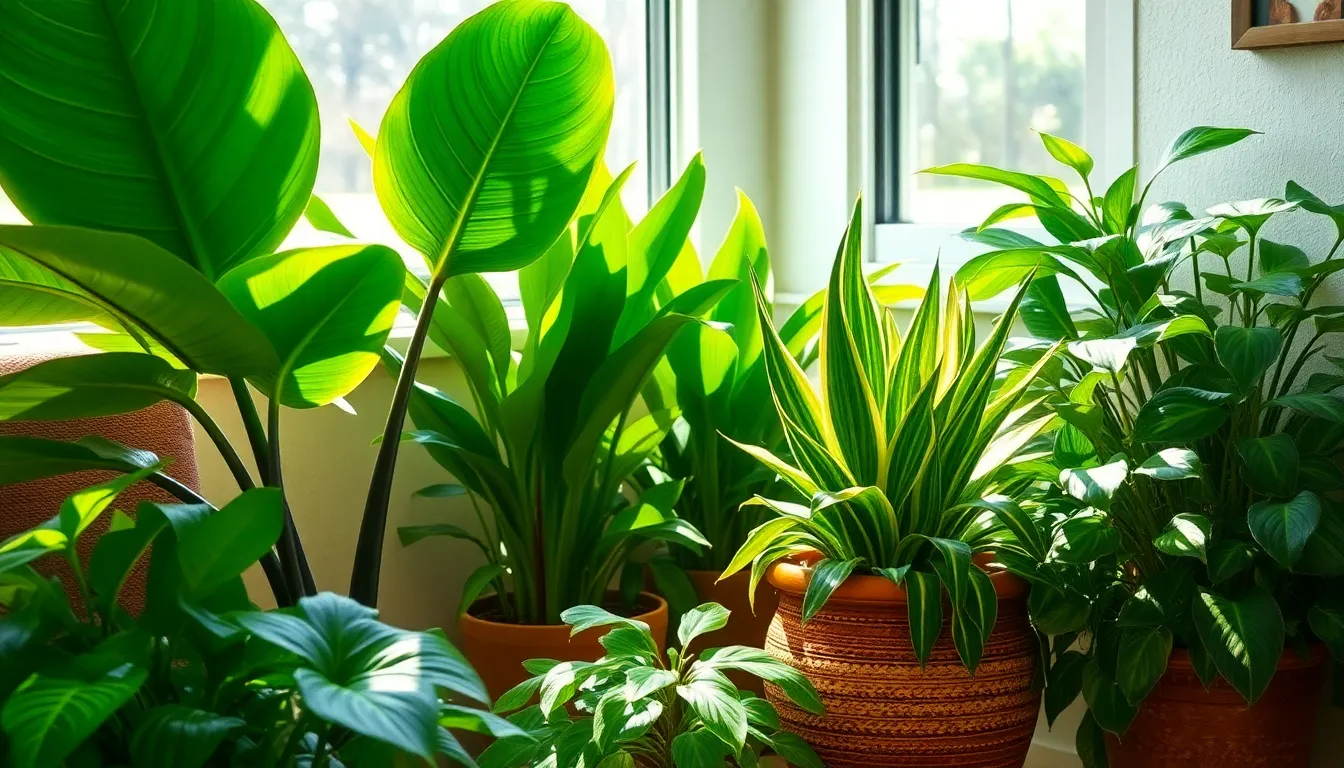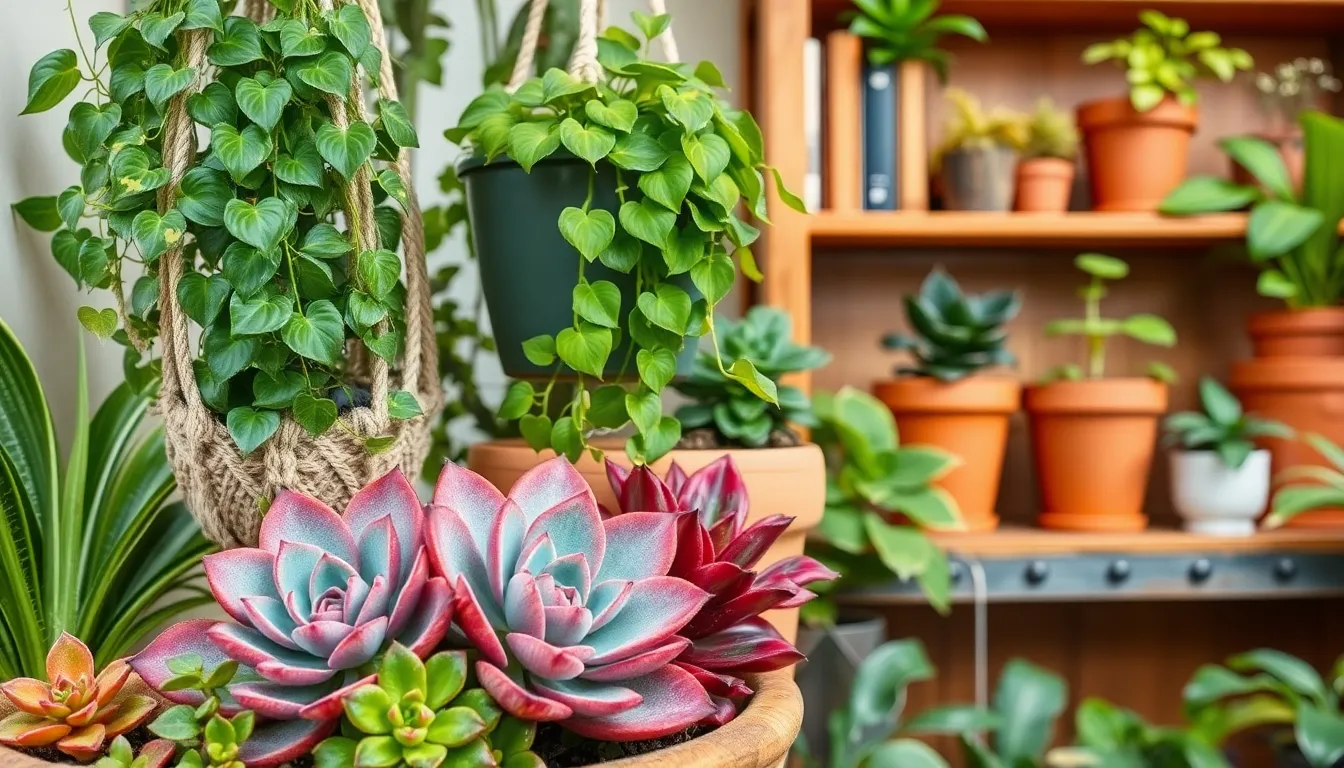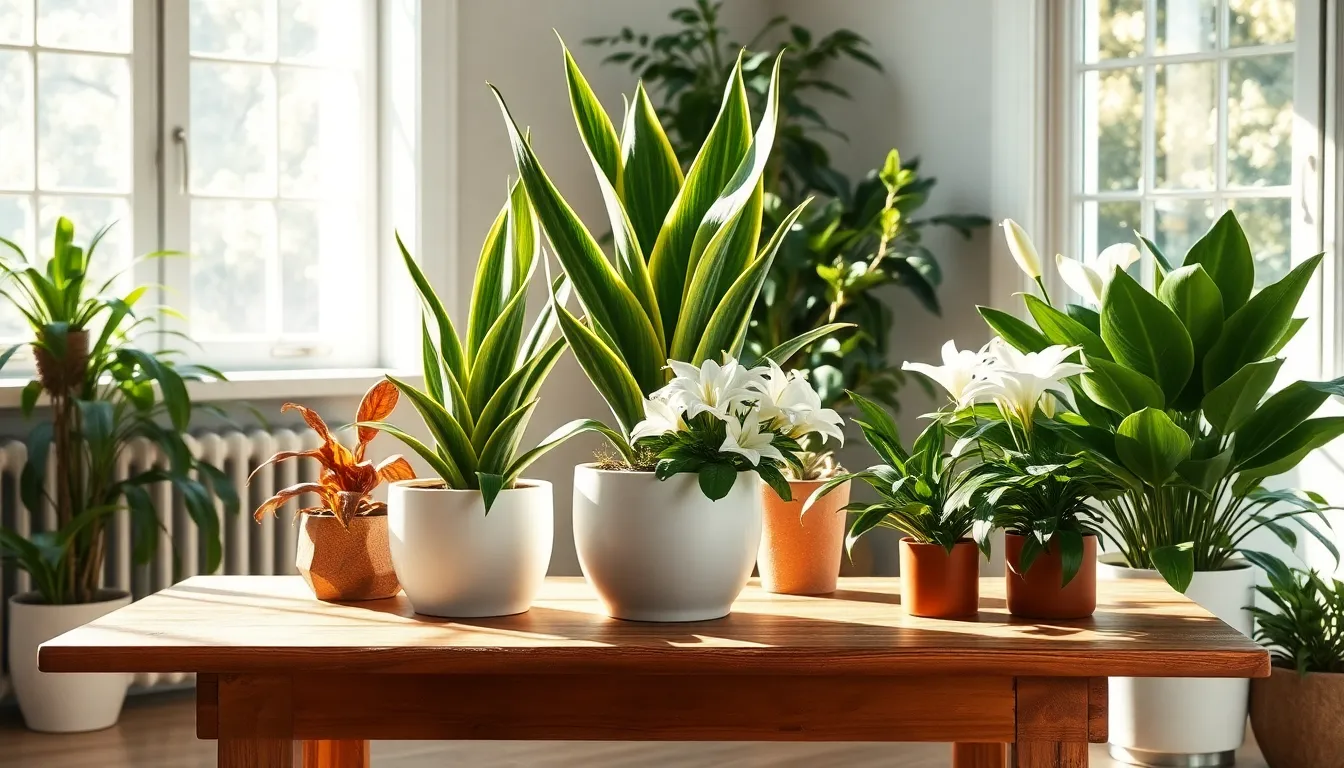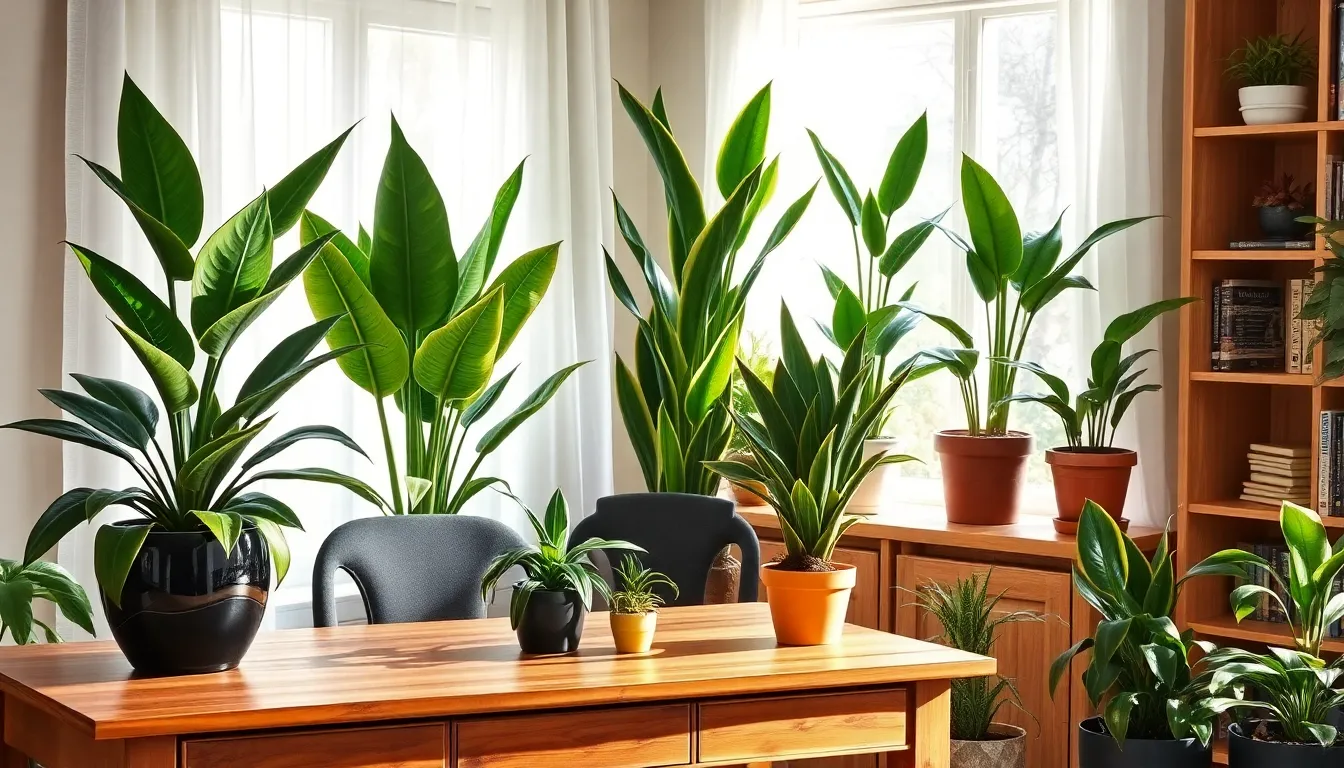Imagine transforming your home into a verdant sanctuary where every breath feels fresher and more invigorating. Indoor plants are not just about aesthetics; they have the remarkable ability to purify the air, making them an essential addition to any home. Whether you’re a seasoned gardener or a budding enthusiast just starting your green journey, understanding which plants can enhance your indoor air quality is a rewarding endeavor. With a little guidance, you can select the right plants to create a healthier living environment for you and your loved ones.
In the following sections, we will explore ten exceptional indoor plants that are masters at filtering out common indoor pollutants. From the resilient Snake Plant to the elegant Peace Lily, each plant will be introduced with care tips and insights to ensure they thrive in your home. You’ll discover which plants are best suited for various light conditions and how to care for them with confidence. By the end of this article, you’ll be equipped with the knowledge to not only beautify your space but also enhance the air you breathe.
Understanding Air-Purifying Plants
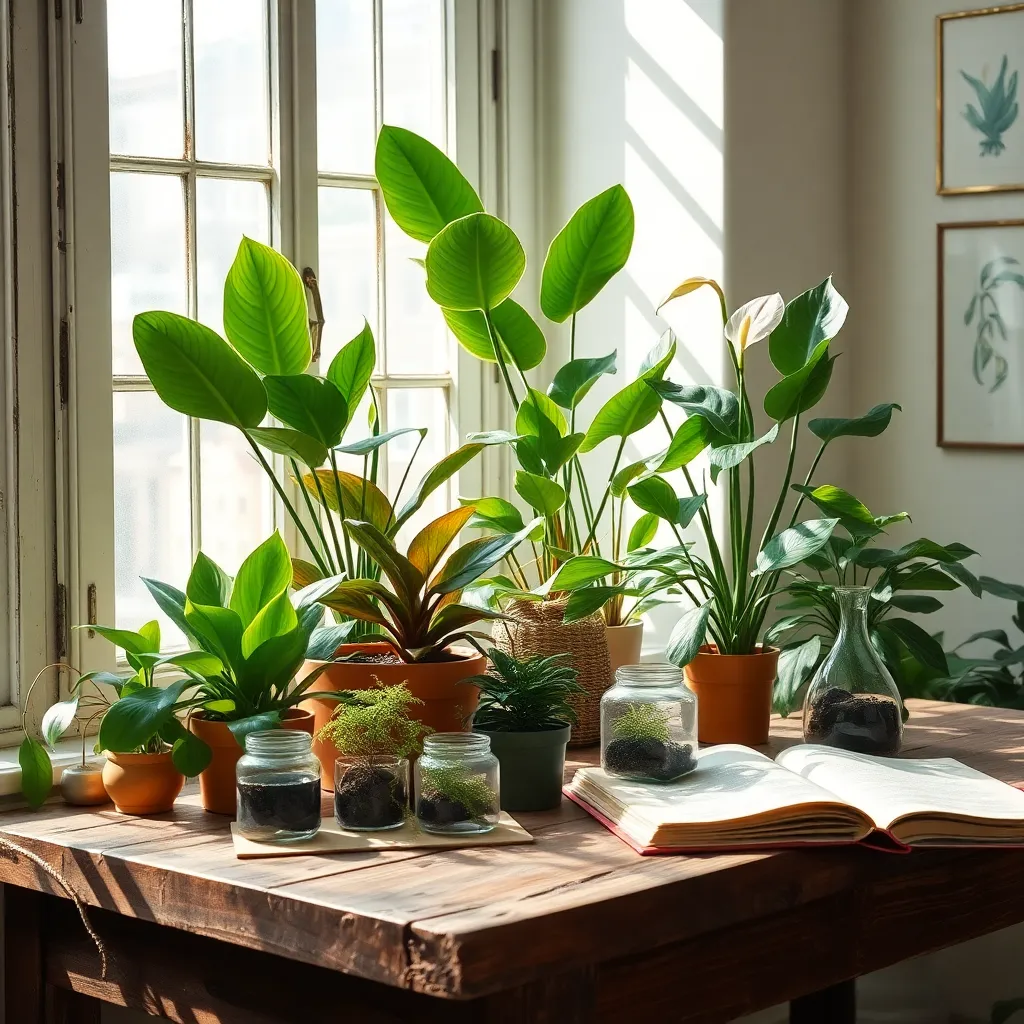
Air-purifying plants not only beautify your space but also improve indoor air quality by filtering out toxins. They are a great choice for anyone looking to create a healthier home environment while enjoying the benefits of nature indoors.
When choosing air-purifying plants, consider species like the Spider Plant and Peace Lily, which are known for their effectiveness in removing pollutants. These plants are relatively easy to care for, making them suitable for beginners and seasoned gardeners alike.
For optimal growth, provide your air-purifying plants with the right conditions. Most of these plants thrive in indirect light and require well-draining soil; a general-purpose potting mix works well for most species.
Watering is crucial, and it’s important to avoid overwatering, which can lead to root rot. Allow the top inch of soil to dry out between waterings to ensure your plants remain healthy and vibrant.
As you become more experienced, you might explore advanced care techniques like humidity management, which can be particularly beneficial for tropical air-purifying plants. Consider grouping plants together or using a humidity tray to maintain the necessary moisture levels in the air.
Benefits of Indoor Greenery
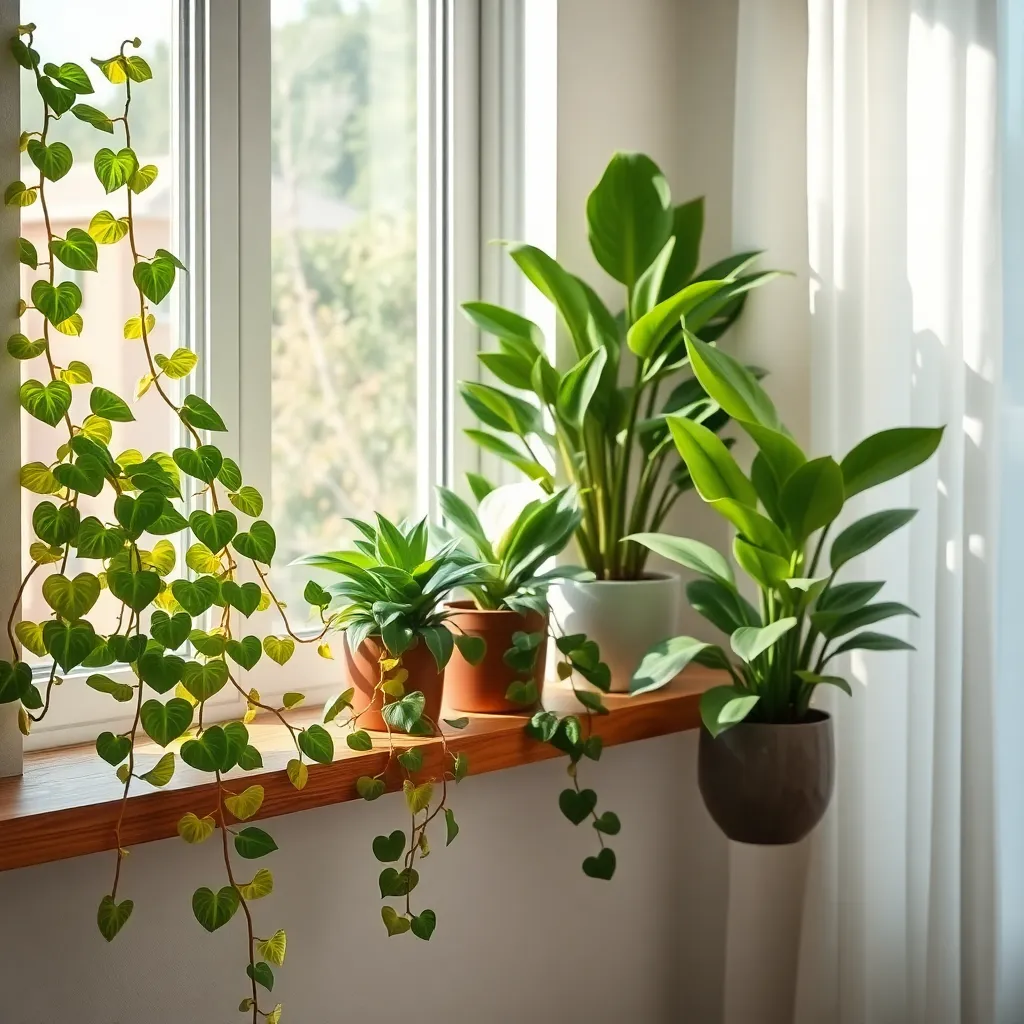
Bringing indoor greenery into your home offers numerous benefits beyond aesthetics. Not only do plants enhance the visual appeal of your space, but they also contribute to a healthier living environment by improving air quality.
Indoor plants can absorb toxins, increase humidity, and produce oxygen, making your home a more pleasant place to live. To maximize these benefits, consider placing plants in rooms where you spend the most time, such as the living room or bedroom.
For beginners, starting with easy-to-care-for plants such as the spider plant or peace lily can yield noticeable improvements in air quality with minimal effort. These plants thrive in indirect sunlight and require watering once a week, making them perfect for those new to gardening.
Advanced gardeners might explore more demanding species like the fiddle leaf fig, which can add dramatic flair to any room. This plant requires bright, filtered light and consistent moisture, which can be managed with a simple watering schedule and well-draining soil.
To ensure your indoor plants thrive, use a potting mix that retains moisture while allowing excess water to drain effectively. A general-purpose houseplant potting mix will suffice for most species, but adding perlite or sand can improve drainage for larger plants.
Regularly cleaning the leaves of your plants with a damp cloth will help them breathe and photosynthesize more efficiently. This simple task also reduces dust accumulation, further enhancing the air-purifying capabilities of your indoor garden.
Choosing Low-Maintenance Varieties
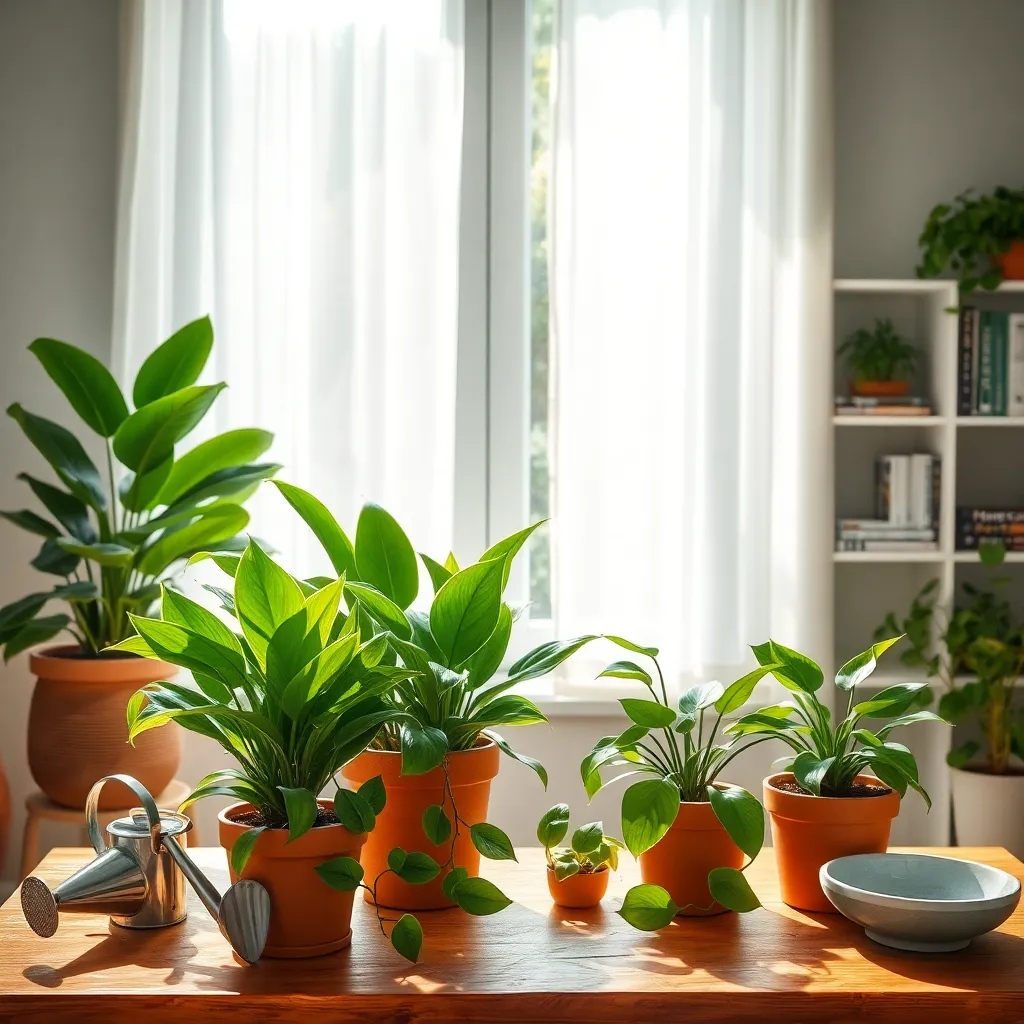
When selecting low-maintenance indoor plants, it’s important to prioritize those that thrive with minimal intervention. Snake plants (Sansevieria) are an excellent choice because they tolerate low light and infrequent watering, making them perfect for beginners.
Another ideal plant is the ZZ plant (Zamioculcas zamiifolia), which can survive in various lighting conditions and needs watering only when the soil is completely dry. This plant’s resilience makes it a favorite among busy gardeners who might forget to water regularly.
For those seeking a splash of color, the peace lily (Spathiphyllum) offers beautiful blooms and can handle low light environments. To ensure peace lilies thrive, water them approximately once a week or whenever their soil feels dry to the touch.
Consider using a well-draining potting mix to prevent root rot in these plants. Combining equal parts peat moss, perlite, and potting soil will create an ideal environment for most low-maintenance houseplants.
Top Oxygen-Boosting Plants
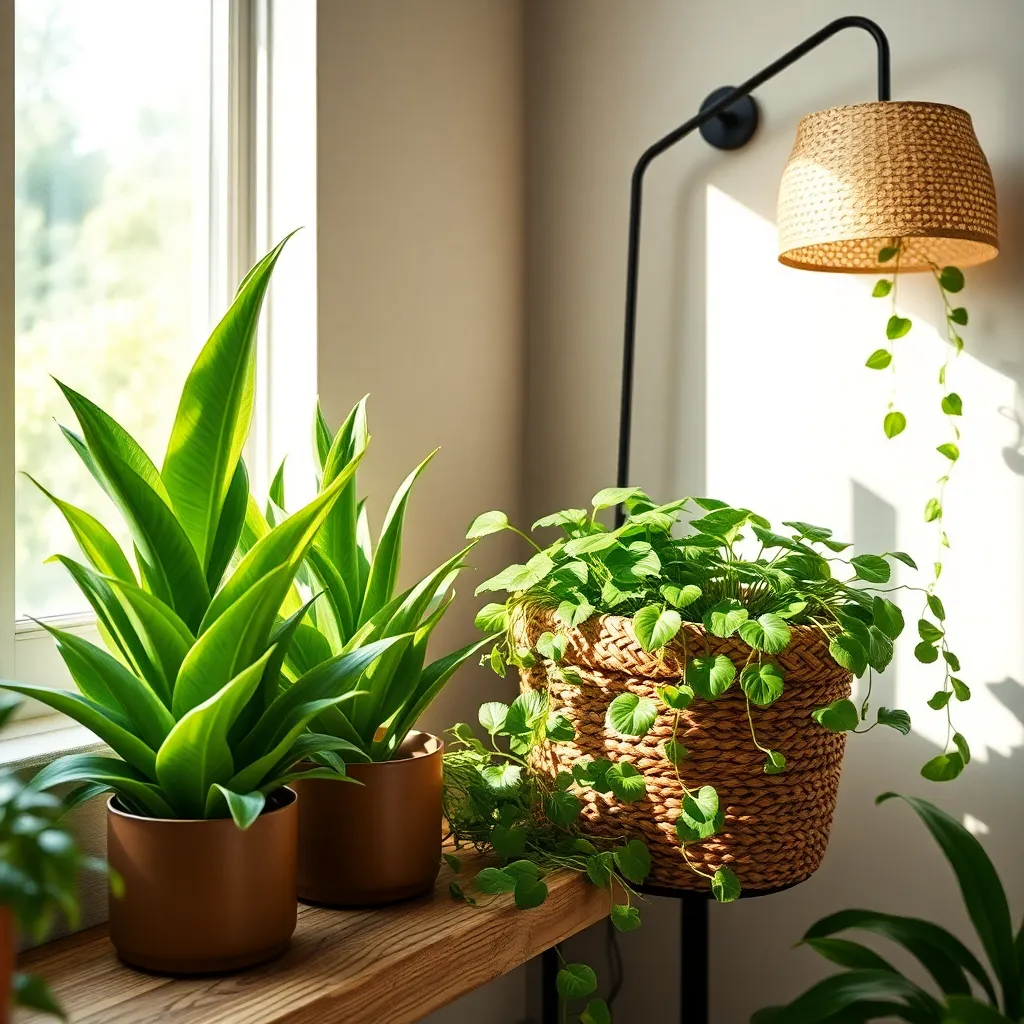
For those seeking to enhance indoor air quality, incorporating top oxygen-boosting plants into your home is a great strategy. The Peace Lily is a prime example, known for its ability to purify the air while thriving in low light conditions.
Position your Peace Lily away from direct sunlight to prevent leaf burn, and make sure the soil remains consistently moist but not waterlogged. Using a well-draining potting mix enriched with organic matter will support its growth, keeping this plant healthy and productive.
Another excellent choice is the Spider Plant, which is not only easy to care for but also highly effective at increasing oxygen levels indoors. This plant prefers bright, indirect light and should be watered moderately, allowing the top inch of soil to dry out between waterings.
For optimal growth, consider using a general-purpose potting mix and fertilize sparingly during the growing season with a diluted liquid fertilizer. The Spider Plant also benefits from occasional repotting to prevent root binding, ensuring it continues to thrive and purify your air.
The Snake Plant, also known as Mother-in-Law’s Tongue, is another resilient option for enhancing oxygen indoors. It can tolerate a wide range of light conditions, making it perfect for various home environments, and requires minimal watering—once every couple of weeks is generally sufficient.
Avoid overwatering the Snake Plant by using a sandy, well-draining soil mix, and ensure the pot has adequate drainage to prevent root rot. By positioning these plants strategically around your home, you can effectively boost oxygen levels, creating a healthier living space with minimal effort.
Effective Toxin-Removing Species
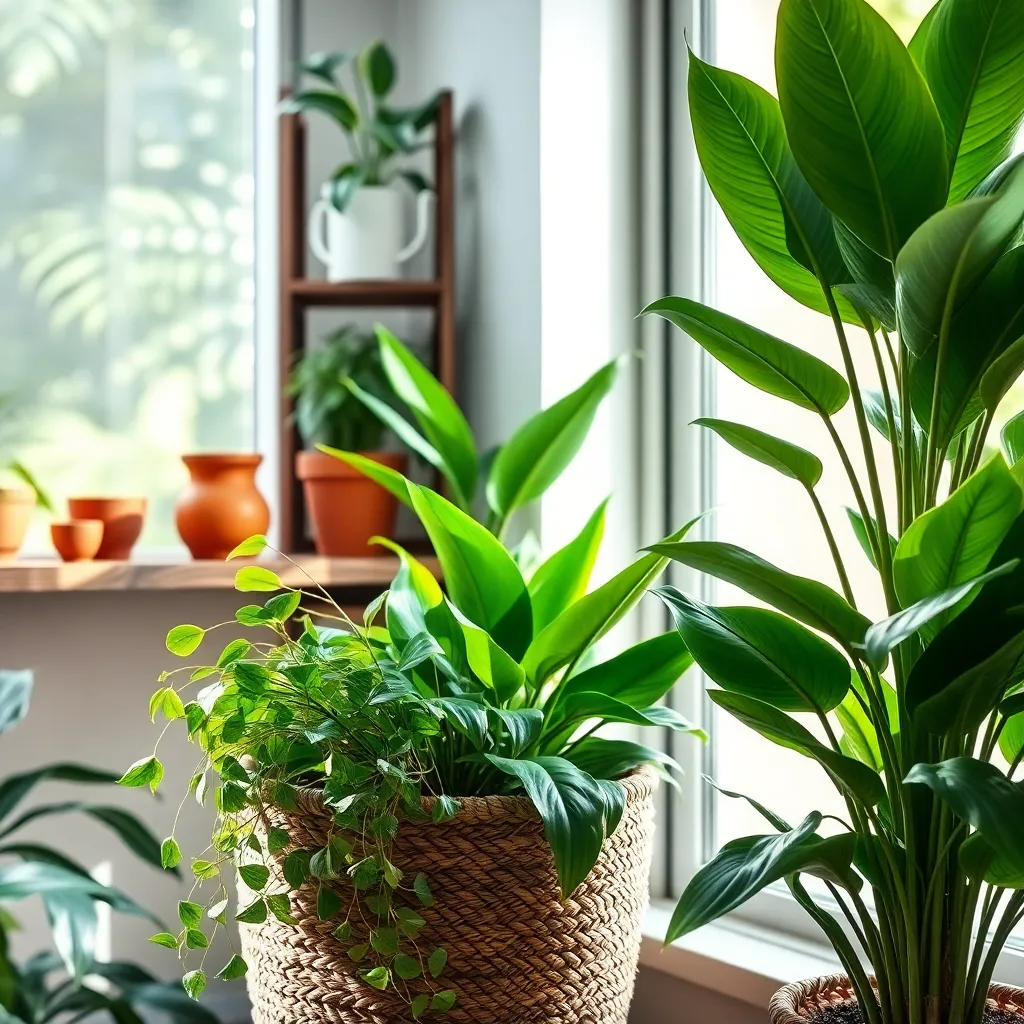
Adding toxin-removing plants to your indoor garden can significantly improve air quality. Spider plants (Chlorophytum comosum) are particularly effective at removing pollutants like formaldehyde and xylene, common in household products.
To care for spider plants, ensure they have access to indirect sunlight and moderate watering. Use well-draining soil, such as a mix of potting soil and perlite, to keep the roots healthy and prevent rot.
Another excellent choice is the peace lily (Spathiphyllum spp.), which excels at removing ammonia, benzene, and formaldehyde. Keep the soil consistently moist but not waterlogged, and place the plant in a shaded area to mimic its natural habitat.
For those who prefer a plant with visual appeal, the Boston fern (Nephrolepis exaltata) is a great option. It effectively removes pollutants like formaldehyde and xylene while adding lush greenery to your space.
Boston ferns require a bit more attention; they thrive in high humidity and cooler temperatures. Mist them regularly and place them near a bathroom or kitchen window where they can benefit from the moisture and indirect light.
Incorporating these plants into your home not only enhances air quality but also brings a touch of nature indoors. With the right care and conditions, these toxin-removing species can thrive and contribute to a healthier living environment.
Light Requirements for Growth
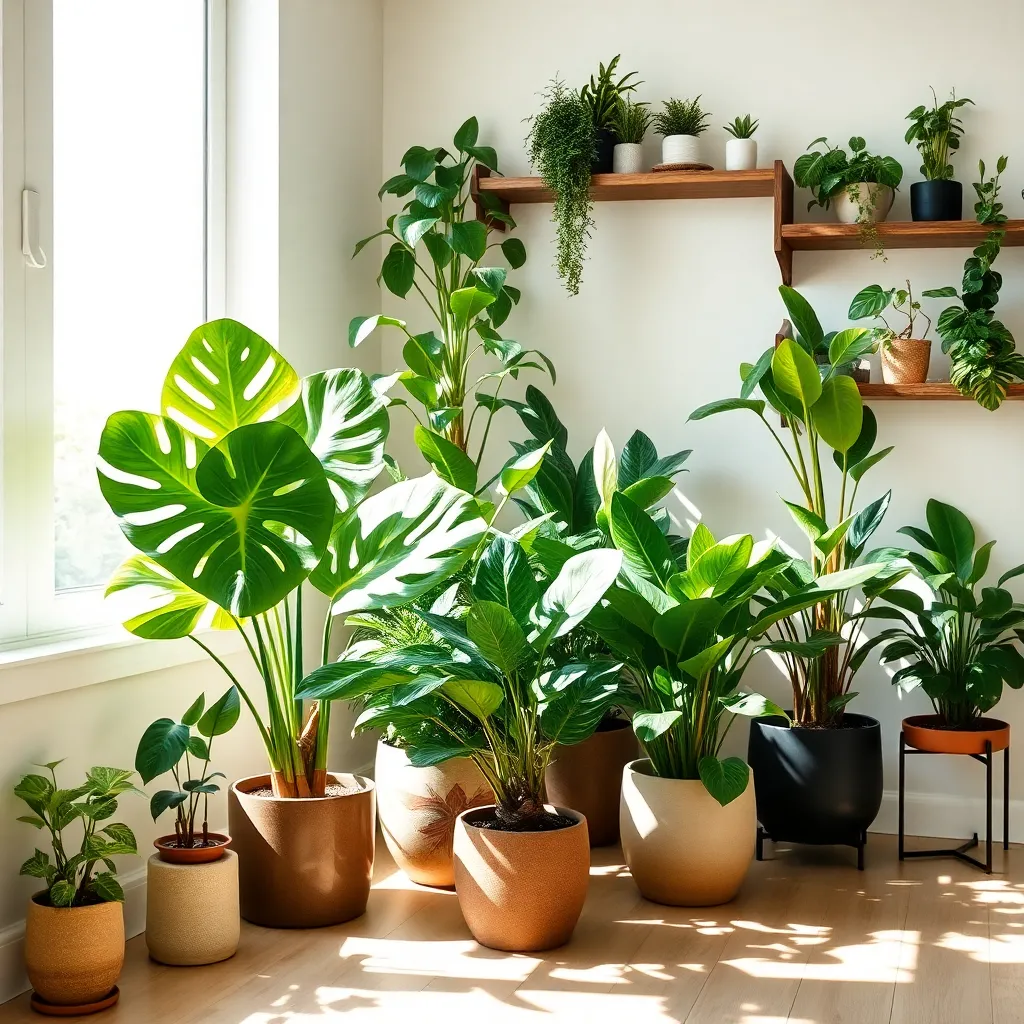
Proper light is crucial for indoor plants to thrive and effectively improve air quality. Most indoor plants prefer either bright, indirect light or can adapt to lower light conditions, depending on their species.
For example, the Snake Plant, known for its air-purifying abilities, can tolerate low light but thrives in medium to bright indirect light. In contrast, the Peace Lily, another excellent air purifier, prefers low to medium indirect light to prevent leaf scorch.
South or east-facing windows often provide ideal lighting conditions for many indoor plants, offering a balance of brightness and warmth. If natural light is insufficient, consider using full-spectrum grow lights to supplement, especially during shorter winter days.
Rotate your plants every few weeks to ensure all sides receive equal light exposure, promoting even growth. For plants like the Spider Plant, which can adapt to varying light conditions, this simple technique can enhance their overall health and air-purifying efficiency.
Monitor your plants for signs of light deficiency, such as yellowing leaves or leggy growth, and adjust accordingly. By understanding and catering to the specific light needs of each plant, you can maximize their growth and air-cleaning potential in your indoor space.
Ideal Temperature and Humidity
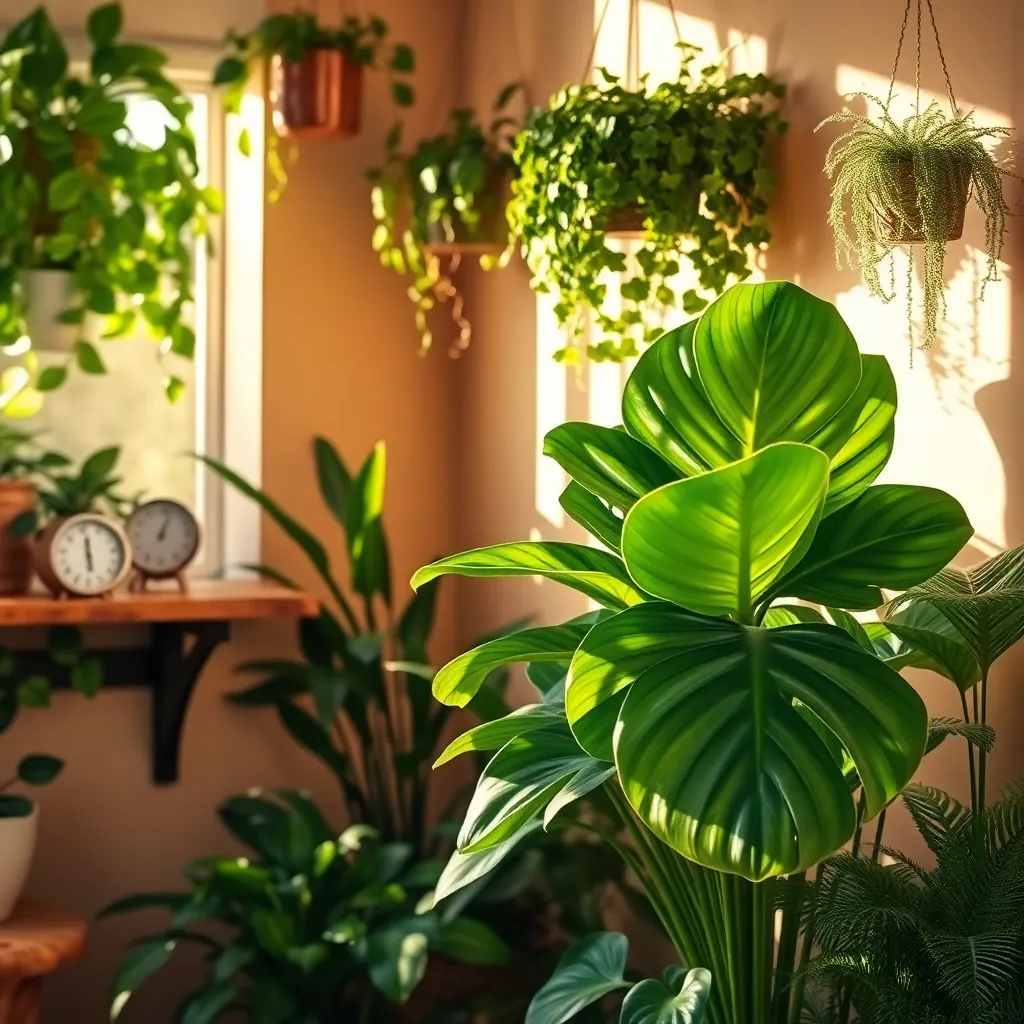
Temperature and humidity play crucial roles in the health and growth of indoor plants, especially when aiming to improve air quality. Most air-purifying indoor plants thrive in temperatures between 65°F and 75°F (18°C to 24°C), making them well-suited for average indoor environments.
For optimal health, avoid placing plants near drafts or heat sources that could cause fluctuations. Consistent temperatures help plants like the Spider Plant and Peace Lily maintain their air-purifying abilities.
Humidity levels can also significantly impact plant health, particularly for tropical varieties like the Boston Fern and Areca Palm. Maintaining a humidity level of around 40% to 60% is often ideal for most indoor plants.
If your home tends to be dry, especially in winter, consider using a humidity tray or placing a humidifier nearby. These methods not only enhance plant growth but also improve air quality by preventing dry air.
Experienced gardeners might try grouping plants together to naturally increase humidity through transpiration. This technique can be especially useful for creating a more hospitable environment for moisture-loving plants.
- Use a digital hygrometer to monitor humidity levels accurately.
- Adjust your home’s thermostat gradually to prevent stress on plants.
- Consider misting plants occasionally, but avoid over-saturating foliage.
Proper Watering Practices
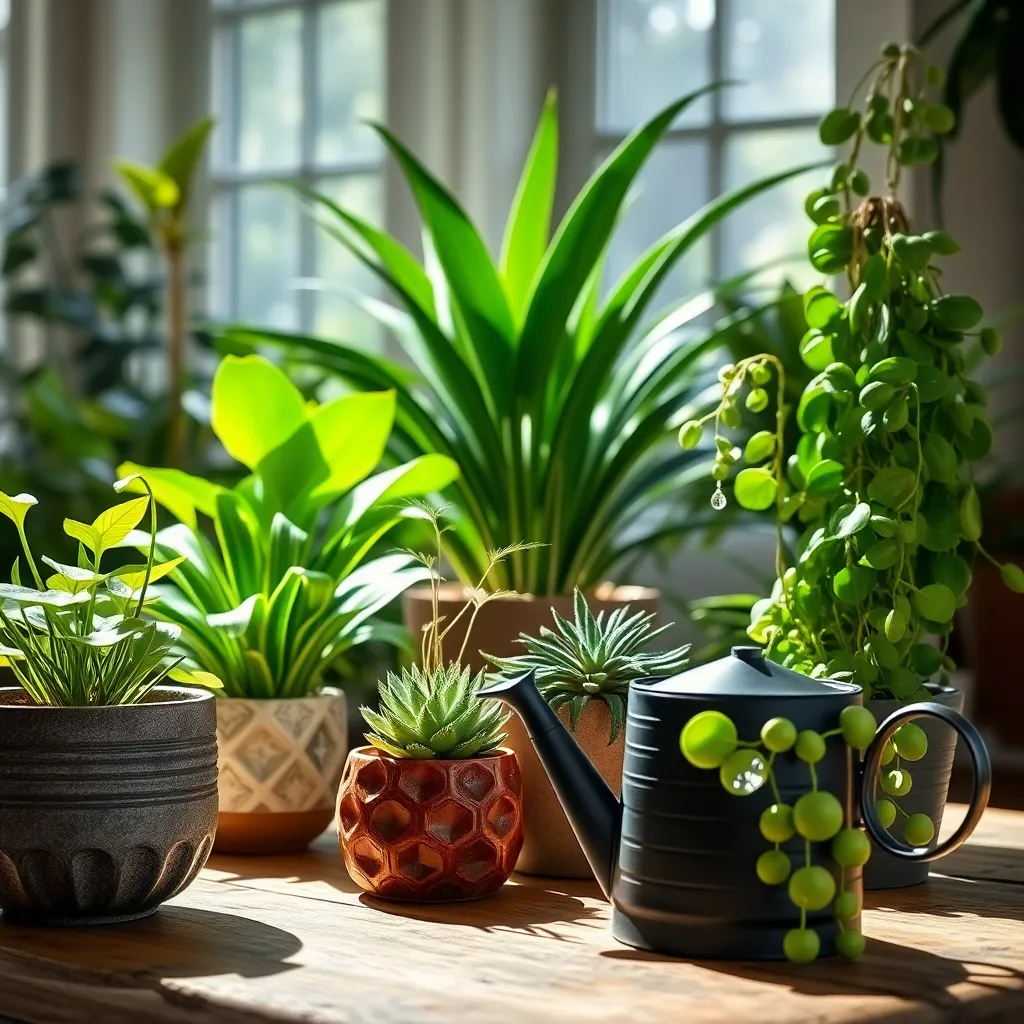
Watering indoor plants properly is crucial for their health and air-purifying abilities. It’s important to remember that over-watering is a common mistake that can lead to root rot and other problems.
Begin by understanding the specific water needs of each plant species you own. For instance, snake plants and succulents prefer dry conditions and should not be watered until the soil is completely dry.
To check soil moisture, insert your finger about an inch into the soil. If it feels dry at this depth, it’s time to water; otherwise, wait a few more days to avoid over-saturation.
Using the right type of water can also make a big difference in plant health. Filtered or distilled water is best for sensitive plants like ferns and peace lilies, as it avoids the harmful effects of chlorine or hard minerals.
For advanced gardeners, consider the technique of bottom watering, where you let the pot sit in a shallow dish of water. This allows plants to absorb moisture through the drainage holes, promoting strong root growth and preventing surface soil compaction.
Ensuring Healthy Leaf Care
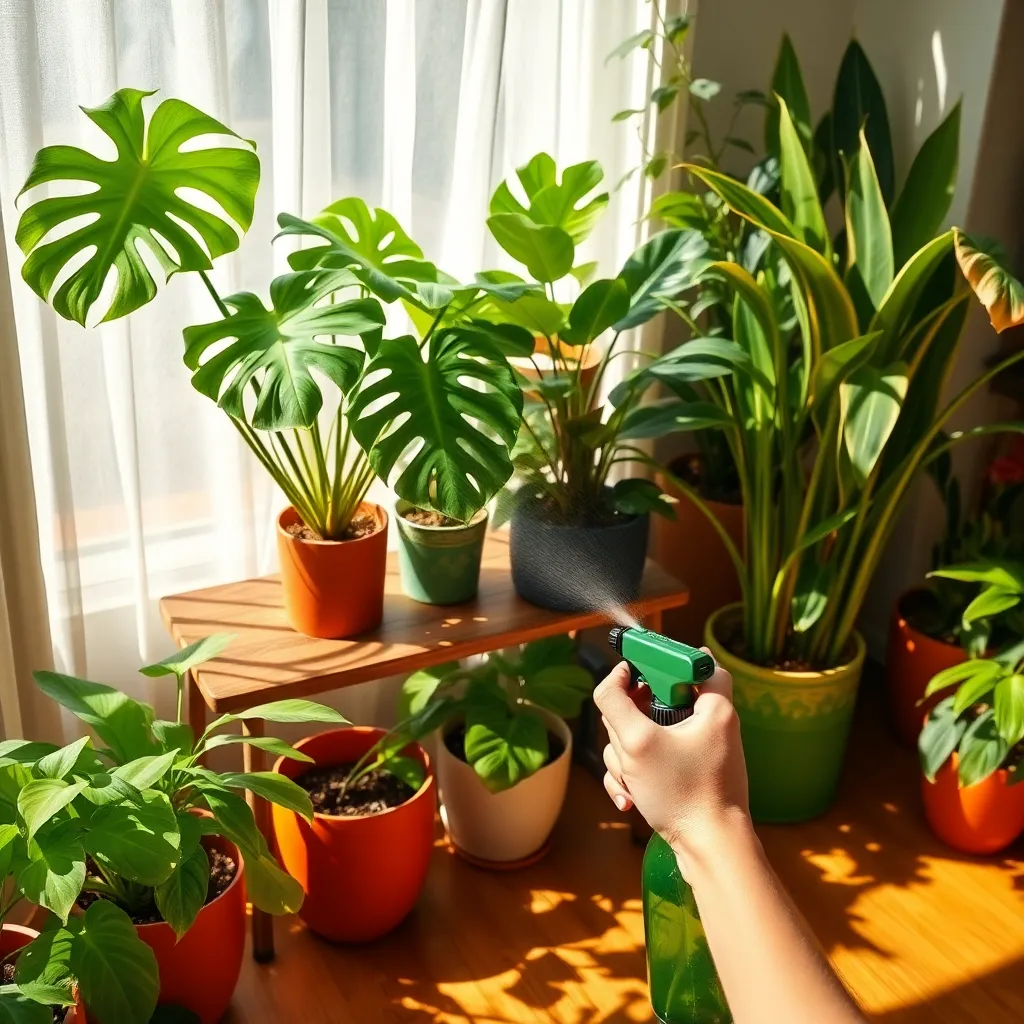
To keep your indoor plants thriving, giving attention to their leaves is essential. Regularly examining leaves for signs of distress can help you address issues before they become severe.
Dust accumulation on leaves can hinder photosynthesis, so gently wiping them with a damp cloth every couple of weeks is helpful. This simple routine not only boosts your plant’s health but also enhances its aesthetic appeal.
Monitoring leaf color is crucial, as changes might indicate nutrient deficiencies or overwatering. For instance, yellowing leaves often suggest a need for reduced watering or improved drainage.
For advanced care, consider using a diluted neem oil solution to manage pests like spider mites or aphids. This natural treatment can be applied monthly as a preventative measure to keep your plants pest-free.
Ensure your plants have adequate humidity, particularly in dry indoor environments. Placing a small humidifier nearby or grouping plants together can create a more humid microclimate.
By making these leaf care practices a regular part of your plant maintenance routine, you’ll ensure your indoor garden remains lush and vibrant. Remember, healthy leaves are a sign of a healthy plant, contributing to better air quality in your home.
Maximizing Air Quality Benefits
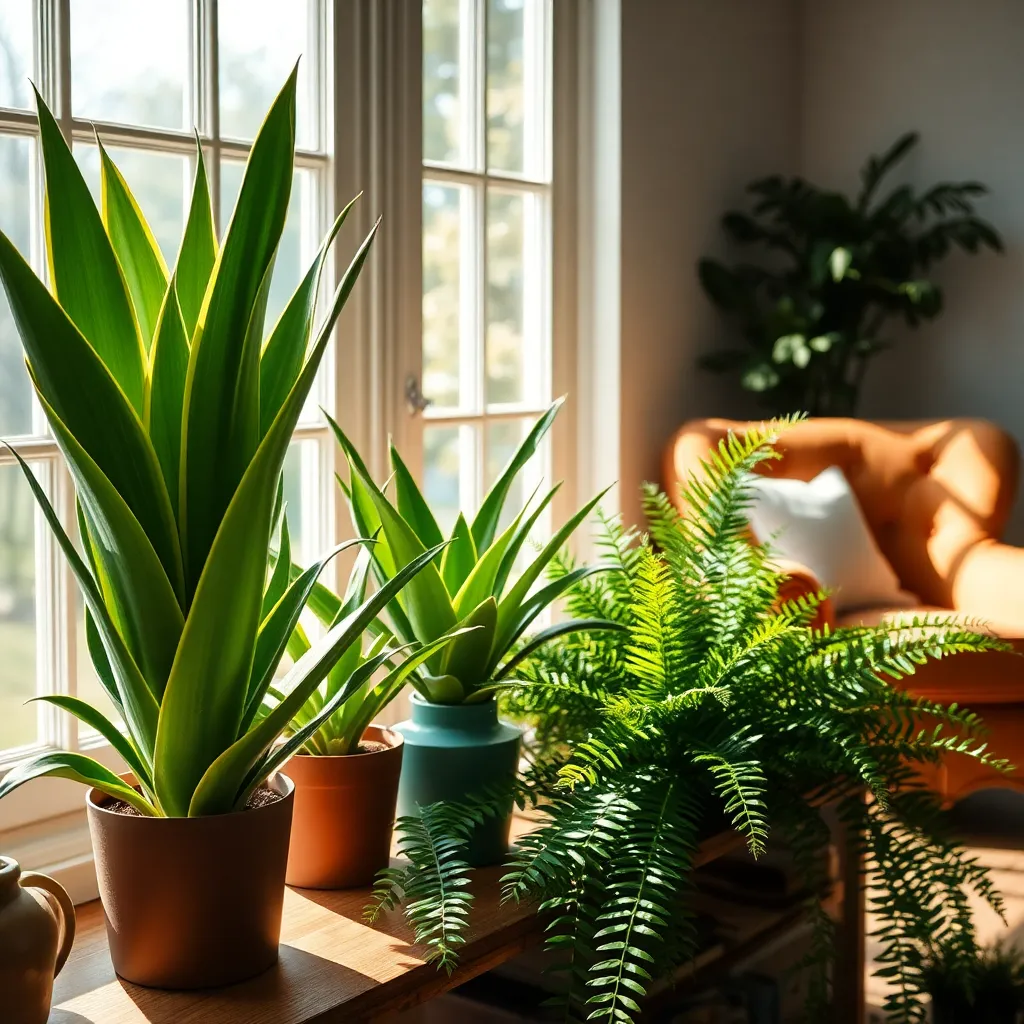
To fully leverage the air-purifying benefits of your indoor plants, it’s crucial to place them correctly in your home. Position plants in well-lit areas where they can receive indirect sunlight, as many air-purifying plants thrive in moderate to bright light conditions.
Regular maintenance is key to maximizing the effectiveness of your plants’ air-cleansing abilities. Ensure consistent watering schedules by checking soil moisture weekly; most indoor plants prefer their soil to dry out slightly between waterings.
In addition to water, indoor plants benefit significantly from regular feeding. Use a balanced, water-soluble fertilizer monthly during the growing season to promote strong, healthy leaves that are efficient at absorbing pollutants.
Advanced gardeners can experiment with plant placement to enhance air circulation around their green companions. Grouping plants together can improve humidity levels and encourage better growth, which in turn boosts their air-purifying capabilities.
Conclusion: Growing Success with These Plants
As we’ve explored the world of indoor plants that enhance air quality, we’ve also uncovered ten key concepts that parallel nurturing healthy relationships: communication (like the peace lily), patience (exemplified by the slow-growing snake plant), care (mirrored in the nurturing of a Boston fern), adaptability (as seen in the resilient spider plant), balance (represented by the aloe vera), growth (inspired by the pothos), support (embodied by the bamboo palm), trust (akin to the enduring rubber plant), commitment (seen in the long-lasting English ivy), and harmony (as reflected by the calming lavender). These concepts remind us that relationships, like plants, thrive under attentive care and a nurturing environment.
To take immediate action, consider choosing one plant from this list to bring into your home. As you care for it, let it serve as a daily reminder of the qualities you wish to cultivate in your relationships. Save or bookmark this article to revisit these concepts and reinforce your journey towards healthier relationships.
Remember, just as plants purify our air, fostering these qualities can breathe new life into your relationships. With intention and effort, your relationships can flourish beautifully, growing stronger and more vibrant each day.

